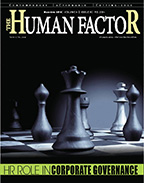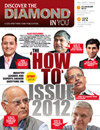PROF. WILLIAM “BILL” MORRISSEY AUTHOR, EFFECTIVE RECRUITMENT AND SELECTION Finding the right ‘FIT’ PROF. William “Bill” Morrissey (Author, Effective Recruitment and Selection) says effective recruitment and selection occurs when the objectives of the organisation, the business unit and the individual are satisfactorily aligned Issue Date - 01/03/2013 |
 Q.What is so complicated about the recruitment and selection process that is hard for HR to handle? Q.What is so complicated about the recruitment and selection process that is hard for HR to handle?A. In the current scenario, HR professionals face many challenges, including globalisation, greater education levels of employees, ageing population, the needs of the five generations in the workforce, strategically linking recruitment and selection with other HR activities, employee mobility, scarcity of talent and pressure to link recruitment and selection to corporate objectives. These are some of the complications faced by HR in the white water environment where HR professionals are expected to make instant decisions. HR no longer trails behind other vital functions of the organisation. It must support line managers and challenge old paradigms. Despite these challenges, this is an exciting time for lateral and strategic thinking for HR managers. Q. How would you define an effective recruitment and selection programme? What are the key elements that make recruitment effective? A. Effective recruitment and selection occurs when the objectives of the organisation, the business unit and the individual are satisfactorily aligned. The metrics of job security and long-term employment are fading in the modern society, where organisations are using retrenchment as a staple business strategy and employees have become more mobile and change jobs whenever they feel dissatisfied. Having employees with the right match of aptitude and attitude can lead to effective people management. Human resource planning, careful preparation of position descriptions (role clarity) and person specifications to ensure the match between what is required and what the applicant can bring to the organisation are the key elements to effective recruitment. Q. What are some of the long-term benefits of effective recruitment and selection? A. A well planned and well executed recruitment and selection programme can have a number of long-term benefits for both employers and employees. Getting the right ‘fit’ between organisational objectives and employee needs will lead to faster settling in of the new employee and lead to more productivity and efficiency. Statistically, this process can take weeks or months e.g., a salesman can take 12 months to be fully effective, so poor recruitment can be costly for the organisation as well as for employees. If the wrong person is hired it will put a strain on other HR processes, including more training, closer supervision and ongoing performance management and counselling. |
Q. How has the trend of assessing a candidate evolved over the years? What are the areas in which the skill sets of HR, in understanding a candidate, have seen changes? A. The process has changed significantly in recent years due to demands of business, applicants and rapid change in technology. Gone are the days when we chose any candidate and were prepared to seek another if they were unsuccessful. The cost of replacement has increased dramatically and the opportunity cost of getting things wrong impact on the profitability of the organisation and dilute the company brand (one of the contemporary issues in recruitment). HR professionals now must be technology savvy, understand the psychology of internal managers and the applicants’ needs. The ability to network and negotiate is essential to effectively deal with people internally and externally. Q. How best can HR and line managers avoid being judgemental? What should they practise? A. We all have biases that lead to making instant judgements, and as managers have to develop a discipline to ignore these tendencies, it will take time to do so. An organisational ‘code of conduct’ can set guidelines and help all stakeholders appreciate the need to be fair. Managers should discuss this aspect when developing the plan for recruitment. Job analysis is another helpful process where the role and the incumbent specifications can act as guidelines and reduce the risk of being judgemental. Q. Please share with us some of the best recruitment practices that you have encountered. A. The most appropriate recruitment practises are those that attract the maximum number of candidates for each position. I had a student who worked for an insurance company, which advertised the most commonly recruited positions on the back of the business cards of the sales people. This is an example of one great practise that entailed little cost yet had great exposure. So, the key is to think laterally and look for candidates where they are most likely to find you, including the company website. Q. Is there any best model of recruitment? What do you suggest as the best recruitment and selection process? A. There are many models to choose from; however, an accepted model is the Harvard model, which starts with the company vision and corporate strategy and has the following outcomes: 1 Commitment 2 Congruence 3 Competence 4 Cost effectiveness This model links corporate strategy, business needs and HR process. Another example is the Compton, Nankervis, Baird and Coffey model, which highlights the process itself. |
Shishir parasher
|
|
|



